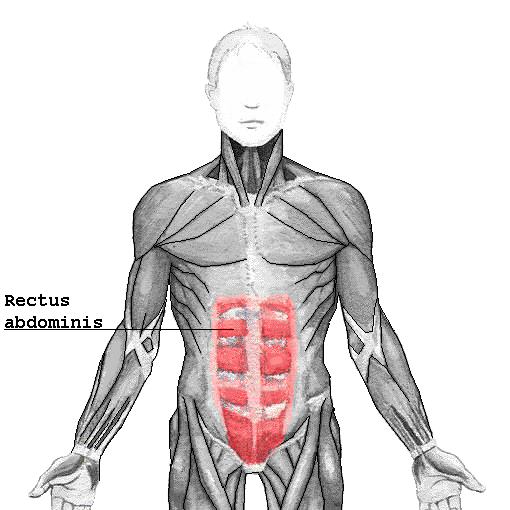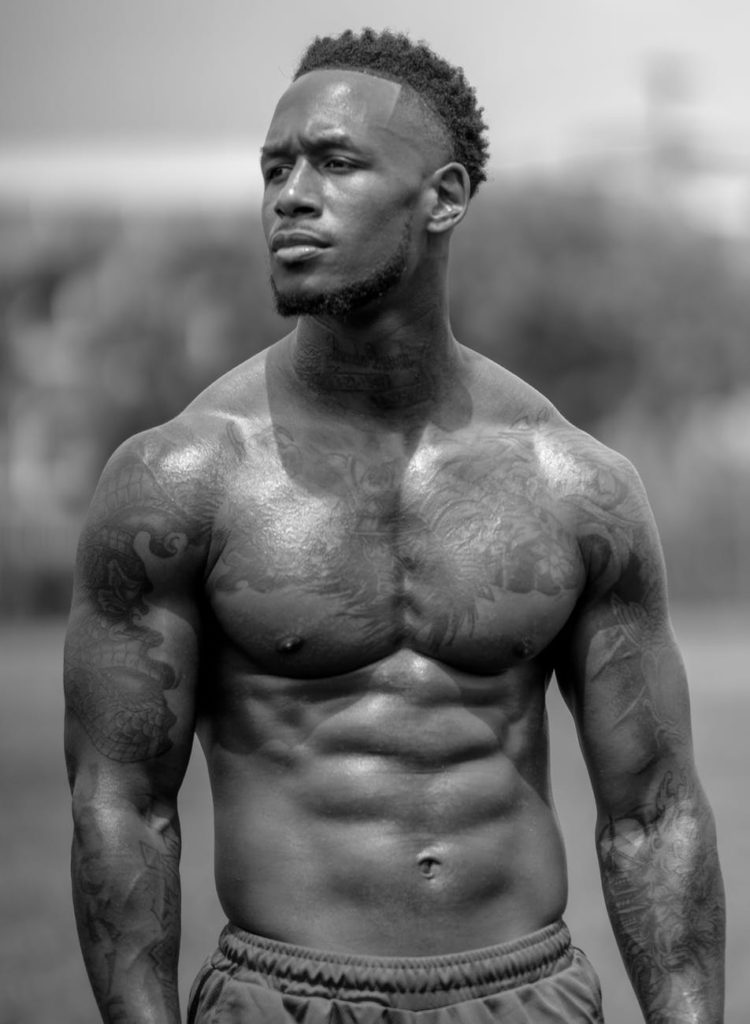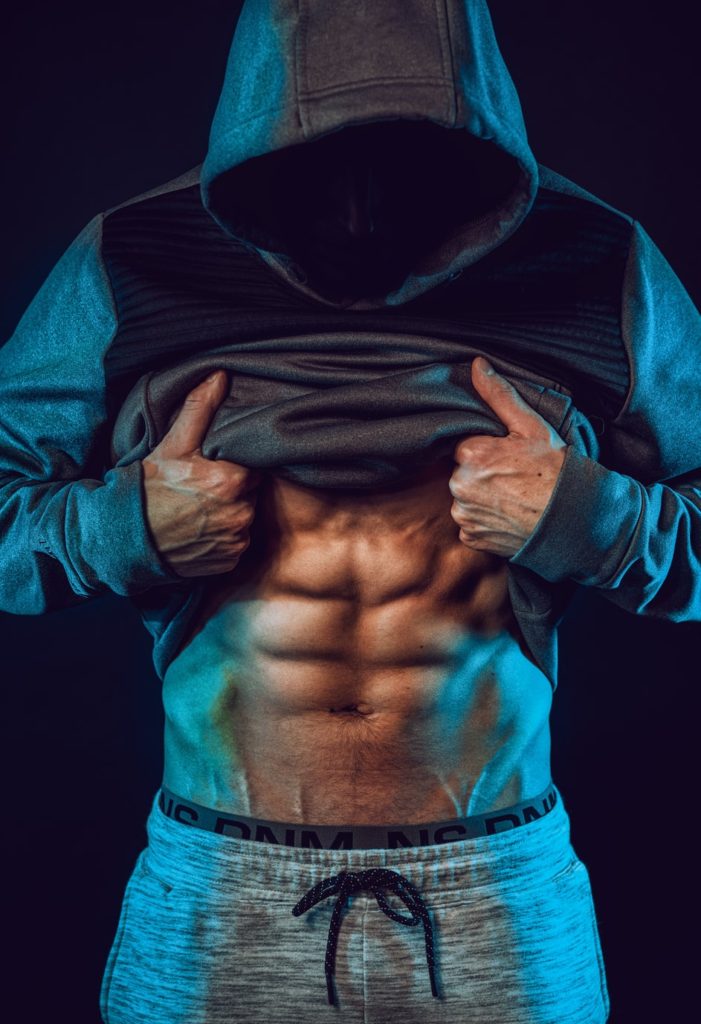
“If you’re observant, you’ve likely noticed that some individuals have an eight pack instead of six, and sometimes even four, but why?”
People love abs. Just look at our films, magazines, posters, books, ads and you’ll see shredded six-packs because six-packs sell. We understand that abs are desirable and also that it takes hard work, dedication, and a clean diet to get them. But some of us were walking around with a six-pack as teenagers without even trying. So the question remains, why do skinny guys have abs?
“Skinny guy abs” is a term used for individuals who are naturally lean and have visible abdomen muscles because of it. We all have muscles, but the size, insertions, shape, and visibility vary greatly. We all also have body fat which varies in placement around our bodies. Together this is referred to as “body composition”.
Your body composition will determine when and if your abs are visible at various body fat levels. You’re not stuck to one body composition either, you can gain/lose weight and gain/lose muscle to achieve the look you are striving for.
Skinny guys have a body composition of low fat and some muscle. If their bodyfat is low enough, the muscle is visible.
If you’re a skinny guy with abs who’s looking to bulk up and put on mass, you could very well lose your abs if the right steps aren’t taken. But first, let’s review what abs actually are.
The rectus abdominis
Yes, your abs are called the “rectus abdominis” muscle. “Rectus” means “straight” (referring to the straight muscle fibers), and “abdominis” means “abdomen”.

The rectus abdominis is made up of segments, separated by bands of tissue. These bands can vary in shape and size, and this is what makes every individual’s abdomen muscles unique. The vertical line you can see going up the center of the ab muscles and what separates the segments is called the “linea alba” and all that is, is the connection of the tendon sheath from each lateral wall meeting in the middle. “Linea” means “line” and “alba” means “white” (We will circle back to this!).
So we have our muscle, the sheath on top of it, and above that are three more layers. The hypodermis (also subcutaneous tissue), the dermis, and finally the epidermis.
In plain English, we have the muscle, tendon sheath, fat, and skin.
Unfortunately, there isn’t a lot we can do about the thickness of our tendon sheath or our skin, but we do have control over the muscle size and the hypodermis layer.
What body fat percentage do abs become visible at?
Now I wish there was a number I could put here that would guarantee you visible abs, but it doesn’t work like that.

We all hold our body fat a little differently. Genetics and gender are just two variables to consider. Some of us hold a lot of fat on our abdomen and that means we’re going to have to get to a lower body fat percentage to see that rectus abdominis muscle.
This is where the skinny guys come in, and here is the answer to the title of this article. The reason skinny guys have abs is… because they’re skinny!
Well, because their abdomens are holding very little body fat. This could be because they have an all-around low body fat level or because they hold their body fat in other places like their hips, back, or butt.
For everybody else, your abs will become visible when you lose enough body fat. Sorry, but that’s the truth. Also, targeting the abdomen for fat loss is a common misconception, as fat loss cannot be targeted. Our genetics determine where we hold fat and they will also determine where fat loss occurs quickest on our bodies.
Fortunately, there is another variable we have control over, and that’s the size of our muscles. Growing your abs can help bring them out and become visible even with a little bit of fat on top. The growth of a muscle is called “hypertrophy”.
How do abs grow and how to grow them
We’re not going to cover ab workouts here because that would be way beyond the scope of this article, but we can instead cover the fundamentals of ab training and review the evolutionary purpose of the rectus abdominis.
If you can understand how the rectus abdominis functions, you can discern whether or not an exercise is effective at activating the ab muscles.
Every muscle has an origin and insertion point. Without getting too technical, these two points are where your muscles attach to the bone. For the rectus abdominis, these two points are on the bottom of your ribs, and the bottom of the pubis.
Imagine the muscle as a rubber band, attached to these two points. As the rubber band contracts, it would pull your ribs and pubis closer together. This is exactly what is happening when an ab exercise is performed, such as a leg raise or crunch.
Your rectus abdominis is contracting, pulling these two points together. If you add resistance, which is as simple as moving your body weight, the muscle is being “worked out”.
If you ever have to ask, “Will this exercise work my abs?” remember the function of the rectus abdominis and ask yourself if those two points are coming together. If so, yes, you’re working your abs.
To hypertrophy your abs and make them larger, all you have to do is implement some ab exercises into your exercise regimen.
If you’re a beginner, choose something simple like the aforementioned leg raises, and start with two to three sets per workout.
For the muscle to grow, you must apply something called “progressive overload”. This is simply the act of adding either sets, reps, or resistance to an exercise over time. Remember, muscle growth is an adaptation and you want your ab muscles to constantly adapt so they grow bigger and bigger.
From an evolutionary standpoint, the reason we developed ab muscles was to support the trunk and allow movement. Working out your abs regularly not only helps hypertrophy the muscle but helps reinforce trunk stability and reduce injury to your spine.
4, 6, and 8-pack abs
If you’re observant, you’ve likely noticed that some individuals have an eight pack instead of six, and sometimes even four, but why? As we learned in a paragraph above, these are segments of the rectus abdominis, and while everyone has many segments, the number of visible segments can vary.

A quick google search of something like, “How to get an eight pack” is going to fetch you results suggesting that you can target the two lower abs and essentially earn an eight pack through sheer hard work, integrity, (and the purchase of someone’s “Eight Pack in Eight Weeks!” ebook).
The truth is that genetics determine the look of your abs.
Remember the linea alba? That is the connective tissue that holds the rectus abdominis segments together. The reason we sometimes see abs that look “deep”, “flat”, “tight” etc, is due to the way our linea alba is.
The most common abdomen distinction you’ll see is the six-pack. Below those six segments, the linea alba is often suturing the lower segments too tightly together to allow any more distinguished abs.
Some individuals have an eight pack because their linea alba has separated those lower segments more appealingly. This is also true for four-pack abs. Although it’s less common, some people have a very distinguished four-pack, with the lower segments being too tightly sutured together to have the definition of additional abs.
At the end of the day, genetics is the most influential factor when it comes to abs.
You can lower your body fat and hypertrophy your ab muscle, but you can’t change the way the connective tissue holds the segments together.
And the skinny guys rockin’ a six-pack for no reason at all? It’s low body fat and simply the parents they chose.
Thank you for making it to the end of the article, I appreciate you taking the time to read this. If you want to support me or support the website, consider sharing this post or telling your friends about us.